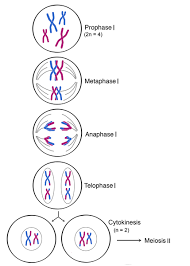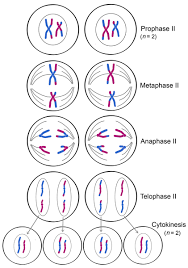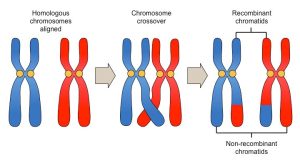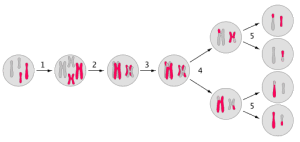Understanding Meiosis: Creating Genetic Diversity
Meiosis is the fascinating process that all organisms use to produce gametes, or sex cells. It is fundamentally different from mitosis, which is the process used for somatic (body) cell division. The goal of meiosis is not to create identical copies of cells, but rather to produce unique cells that contribute to genetic diversity. The mechanisms of meiosis ensure that each resulting sex cell is genetically distinct, allowing variation in populations.
Unlike mitosis, where cells divide once to produce two identical daughter cells, meiosis involves one round of DNA replication and two rounds of cellular division, leading to four non-identical cells. These resulting cells are haploid, meaning they carry half the genetic material compared to typical somatic cells.
If normal human body cells have 46 chromosomes, gametes produced by meiosis have only 23 chromosomes. This is because, during fertilization, the gametes from both parents come together, resulting in a zygote with 46 chromosomes—the correct diploid number.

The Two Stages of Meiosis: Meiosis I and Meiosis II
Meiosis consists of two main stages: Meiosis I and Meiosis II. Each stage has its own phases, much like the stages of mitosis: Prophase, Metaphase, Anaphase, and Telophase.
Meiosis I: Mixing Genetic Material

Prophase I
During Prophase I, DNA replicates and condenses into chromosomes. Unlike mitosis, homologous chromosomes (pairs of chromosomes that code for the same traits—one from each parent) find each other and may cross over, sharing genetic information. This crossing over introduces new combinations of traits, thereby increasing genetic variation.
Metaphase I
Here, homologous chromosome pairs line up at the center of the cell. Unlike mitosis, where individual chromosomes align, Meiosis I has these pairs align together, which further promotes variation through random alignment—either the maternal or paternal chromosome may be on either side.Anaphase I
The homologous pairs are separated and pulled towards opposite poles of the cell. Note that these chromosomes are kept intact (they aren’t split into chromatids yet).Telophase I
Telophase I results in two daughter cells, each containing 46 chromosomes, but with mixed genetic information, which is the key to creating diversity.
Meiosis II: Halving the Genetic Material

Prophase II
New spindle fibers form, and the chromosomes start to coil.Metaphase II
Sister chromatids (identical halves of a duplicated chromosome) line up at the center of the cell.Anaphase II
The sister chromatids are pulled apart and moved towards opposite poles.Telophase II
Telophase II results in the formation of four cells, each with 23 chromosomes. These cells are now haploid and are the gametes—either sperm or egg cells. Each of the four cells is genetically unique due to crossing over and random assortment of chromosomes.
Summary of Meiosis Process
In meiosis, the cell first replicates its DNA, then goes through two rounds of division. The first division (Meiosis I) mixes the genetic information, while the second division (Meiosis II) reduces the chromosome number by half. This ensures that each resulting gamete has 23 chromosomes—half the typical number—so that, upon fertilization, the zygote will have the normal diploid number of chromosomes (46).
Key Features of Meiosis: Creating Variation
Crossing Over in Prophase I: Homologous chromosomes exchange genetic material, leading to new combinations of alleles.
Independent Assortment in Metaphase I: Chromosomes align randomly, leading to countless possible combinations of maternal and paternal chromosomes in the gametes.
These processes ensure that the resulting gametes are all genetically unique, which is fundamental to the genetic diversity observed in populations. Genetic variation is important for the adaptability and survival of species, allowing for a range of responses to environmental changes and disease pressures.
Importance of Meiosis
Without meiosis, offspring would have twice the number of chromosomes, resulting in developmental issues. Meiosis ensures that chromosome numbers are halved in gametes, maintaining stability in chromosome numbers across generations.
In summary, meiosis is a beautifully orchestrated process designed to mix genetic material and reduce chromosome numbers in preparation for fertilization. This careful balancing act provides each new individual with a unique combination of traits, making diversity a cornerstone of life on Earth.









